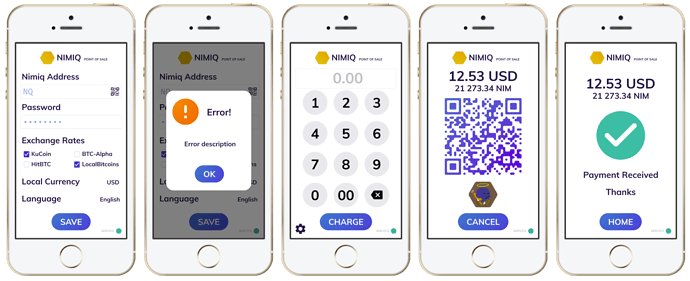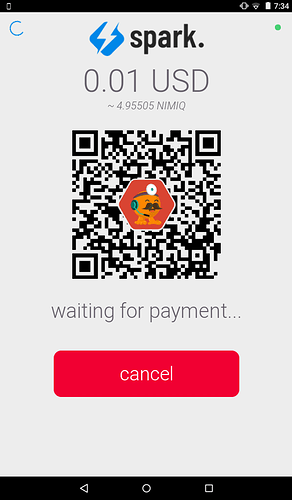Imagine you went to your favorite grocery store a couple of days ago and got the owner interested in start accepting crypto payments in a casual conversation 
They where able to create their own wallet on the Nimiq website, and now they need something to start processing payments right away. At least until they receive their Salamantex ATM/POS unit that they are going to order.
Maybe they just want something running on their smartphones that works as a POS terminal to process crypto payments because they have an old desktop computer without internet connection using it as the cash register, or they just have a small printing calculator in their local exchange with no desktop computer.
For all those use cases the whole payment process could go something like this:
- The cashier selects the currency for the payment (USD, EUR, etc.) from a calculator built-in in the POS app
- Then she enters the amount for the payment
- Then the cashier clicks a button to show the QR code to the customer and waits for the confirmation to appear on screen
- The customer selects what cryptocurrency he is going to use for the payment and scans the QR code that shows the amount and recipient address on his wallet
- Finally the customer sends the payment to the recipient’s address and the confirmation appears on the screen on the POS app
What requirements would a minimum viable product (MVP) for a POS app have in your opinion?
Are there any other use cases that you’d like to mention?
I’ll be adding more information in the upcoming days, to give some posible answers to those questions, but I’d love to hear your thoughts on the matter, and what solutions you propose to have a MVP for the crypto POS.



